Transportation Business Resources

Protecting your cargo and your transportation business is our business. Travelers is dedicated to helping freight brokers, fleet operators and logistics firms reduce preventable losses and costs through our products, vendor alliances and claim processing. We use our transportation experience and science to assist companies with security best practices, proper securement techniques for loading and handling, theft prevention and road safety issues.
Travelers on Freightwaves Podcast
Freightwaves is the leading provider of trucking news, media and analytics for truckers, intermodal and logistic operators. Travelers has recently contributed to the Freightwaves “What the Truck” Podcast series to share insights on topics ranging from choosing the right insurance carrier to commonly overlooked coverages to trends in cargo theft. Give each a listen.
Podcast #59: Specialized Commodities: Metals Theft
Scott Cornell, Vice President of Transportation at Travelers, breaks down the rising wave of specialized commodity cargo - specifically metal theft - impacting the transportation industry. In this insightful discussion from FreightWaves’ What the Truck?!?, Scott shares expert perspectives on theft trends, organized crime tactics, and the steps brokers and carriers can take to strengthen supply chain security, prevent losses, and recover stolen freight.
Aired: 9/22/25
Paid Content
(SPEECH) MALCOM HARRIS:
(DESCRIPTION)
A man sits at a microphone in front of a background screen that reads, FreightWaves. What the Truck? Logos: Verizon Business. What the Truck? On the left is a list, from top to bottom: Freight Tech 100. Mack's Future vision. Trucker Appreciation. The Tweet Moment. Mack's Brand. David's Journey. Metal Theft. Mississippi River. The list is all in beige except for Mississippi River, which is in green.
(SPEECH)
The man that I want to bring -- again, I talked about him a little earlier, Mr. Scott Cornell, again, the Vice President of Transportation at Travelers. Scott, how are you, sir?
(DESCRIPTION)
The screen splits, with the man at the microphone on the left and Scott on the right. Scott wears a Travelers logo polo and sits in an office with a red umbrella logo on the back wall. The list on the left moves down one. Mississippi River is now off the list, Metal Theft is in green, and a new item at the top is, F3.
(SPEECH)
SCOTT CORNELL: [AUDIO OUT] today?
MALCOM HARRIS: I'm doing well. Thank you so much for asking me, and I hope you had a good weekend. I see the product placement with the logo in the back, so I think marketing is definitely taking care of myself.
SCOTT CORNELL: My talents are -- listen, I need to have you introduce me. Your description of me earlier when I heard you talking about it, best ever, so I need you to go with me wherever I go.
[LAUGHTER]
MALCOM HARRIS: I can do that. I can do that. No, you are-- SCOTT CORNELL: You made this way better than I normally do.
MALCOM HARRIS: You've done a lot, man, and I think that needs to be talked about. Anytime I have somebody on What the Truck, I try to show love, and, man, I really was doing some digging into your LinkedIn profile this past weekend. You've done it all, you've seen it all, and it's just great to have you on the show.
SCOTT CORNELL: Yeah, I love being on, so looking forward to doing more with you in the future too.
MALCOM HARRIS: Yeah, absolutely. Absolutely. Well, let's just talk about your specialty, because you are no stranger to this. Theft is your specialty. I mean, not committing it, of course, but helping prevent it from happening and recovering it if it does happen, so when we start, I want to just talk how do we start thinking about theft? What are your general thoughts?
Obviously, you've seen it, you've been around it, but walk -- like, what is the current status of what you're seeing right now in the industry?
(DESCRIPTION)
The split screen changes to just Scott.
(SPEECH)
SCOTT CORNELL: Theft is an all-time high, so I've been doing it about 30 years -- cargo theft and supply chain security investigations, things like that, and right now theft is at an all-time high.
And you're going to see me -- we have a great research team that grabs some information for me when we do these with you guys, so you may see me looking at my notes a little bit here and there because there's a lot to remember for today, but I'll jump actually ahead a little bit on the talking points because you asked what are we seeing in theft in general?
So theft, to me, has always been like the current on a river. There's an undercurrent that is pretty consistent every day. There's going to be the same certain types of theft that we see every day, and then that top current is going to change. You're going to see adjustments and things like that.
And one of the things we've always talked about is cargo thieves are really good at two things in particular, and one of them being knowing what to steal and when to steal it, so if we get back to our original question, cargo theft in general increased by 13% in the second quarter, and that's just one quarter after another we've seen over the past few years where we're seeing increases. No flatlining, no decrease or anything like that, right, but metal....
So every year a specific commodity will pop, and this year it's been metals so far, so metals specifically are up nearly 96%. These statistics are all from CargoNet that supply statistics of the industry. I think they do a great job with their statistics, so as you hear me quoting numbers on this stuff, it's going to be CargoNet numbers.
So in Q2 in 2024, CargoNet had 27 metal thefts reported, but for this same quarter this year, they've had 53, so, again, nearly a 96% increase. And metals are involved in everything, and copper is leading that. That's the metal that leads that,
(DESCRIPTION)
The list on the left blanks out. The Travelers red umbrella logo appears in the top left.
(SPEECH)
and when you have a world that's electrifying itself, including electronic vehicles and all these other things, copper is going to be very valuable. Metals are going to be very valuable, and you're seeing unprecedented growth in this.
And copper is trading at near or above record highs right now, and when that happens, you're going to see it get targeted.
(DESCRIPTION)
The split screen returns. The menu on the left reappears.
(SPEECH)
MALCOM HARRIS: Definitely, I remember being a broker and I had a copper shipment. Believe it or not, it was actually stolen. And I'm sure you were like, well, yeah, that's common sense, but at the time, I was like, why? And then I dug into it more and I didn't realize how much they could be repurposed, it could be sold, it can be dropped in different places, so I get that.
Now, let me ask. The more valuable this is, is it the more attractive it is to thieves? I mean are they doing ... I know electronics have been big, cars have been big, but is there more of a strategy here or is it just a straight line like, hey, grab and dash type thing?
SCOTT CORNELL: Yeah, so sometimes it has to do with value, sometimes it has to do with what's going on. Again, this is why we always say, they're really good at figuring out what they need to steal and when they need to steal it.
(DESCRIPTION)
The split screen changes to just Scott.
(SPEECH)
Right so last year...Sometimes we understand why a commodity popped, sometimes we don't. Last year, as an example, the hot commodities were appliances like refrigerators and then vacuums. And did that have to do with catastrophic events, people rebuilding homes in areas where there were storms and hurricanes and stuff like that? Maybe, but is there a direct correlation? We don't know.
Metals really are a subcategory of the building materials category that we actually refer to when we talk about cargo theft. Metals have always been a targeted commodity. Throughout my career I've seen metal theft go up and down through the cargo theft world.
(DESCRIPTION)
He moves his hand up and down like a spiking line graph.
(SPEECH)
There's always metal theft, but then you see these big spikes like we're seeing, and sometimes that is driven by things like pricing. We're seeing skyrocketing demand for metals and renewable energy, electronic vehicle production, data centers, smart infrastructure, things like that.
And it's both bulk and scrap copper that's getting stolen, but last week I heard about a load of brass that was stolen in the industry. Some of it's being melted down, some of it's being resold for good money.
We've all heard about the catalytic converters being targeted. They have palladium and platinum in them. Studies show that roughly for every 10% rise in metal prices, there's a 20% uptick in theft around those devices, so there's some definite correlation with pricing, but it's also what's in demand? What's it being used for? What does the world need it for?
(DESCRIPTION)
The split screen returns.
(SPEECH)
MALCOM HARRIS: No, absolutely. I mean yYou can definitely tell, Scott, that like thieves just don't mess around. It's crazy, and I was thinking this in my head. I was on a flight this morning and I was excited about this interview, and I still am.
And what are some of the schemes, right, and kinda the methods that these, I'll just say it, I mean robberies, they're heists. What are some of the strategic methods that you're seeing right now? Is there a common theme amongst all these type of theft efforts from these cargo thefts?
(DESCRIPTION)
The split screen changes to just Scott.
(SPEECH)
SCOTT CORNELL: Yeah, so there's really two categories for cargo theft. We talk about this, and I'm glad that we're always talking about this so we're getting the vernacular when we do these shows.
There's really two methods of cargo theft. There's what we call straight theft because it's pretty straightforward. They physically go out and they steal the freight where it sits, truck stops, drop lots, parking lots, and then there's strategic theft, where they basically trick you into giving them the freight. And when it comes to metals, we're seeing both methods used.
They will follow loads out of the distribution centers where the metal is coming from in the Northeast, Southeast, anywhere they're coming from. They will follow those drivers out, and if that driver stops in what we call the red zone, which is really anywhere in that first, let's say, 150 to 250 miles, they'll wait for that driver to go in, take a break, get a meal, use the facilities, get gas, purchase road snacks, whatever it is they're going to do, and they'll steal the load while the driver is away from the truck.
(DESCRIPTION)
Text: Scott Cornell. Vice President of Insurance, Travelers.
(SPEECH)
When it comes to strategic theft, the most common method that the industry sees is what's called double brokering scam, and that's where they basically pretend to be the trucking company, they get assigned to the load, and then when they get assigned to the load, they pretend to be the freight broker and they reassign it and have it shipped where they want to.
And a lot of this is being conducted by these large, international, sophisticated crime rings that we've seen infiltrate cargo theft over the last four or five years, and one of the things that's
been interesting this year about metal loads is no matter where they're being stolen, a lot of them are being pushed through Arizona.
I'm in Arizona, so it's a little unusual for me to see, but a lot of times now we're seeing them push through Arizona. What's the reasoning behind that? Well, one, the CTIP's cargo theft task force and the other task forces that concentrate on cargo theft in California are doing a really good job over this past year or two with recoveries and making some really good busts and things like that, so we think they want to stage the load in Arizona, get it on a truck so it can go straight to the port and moved out of the country.
We do see a lot of these loads moved out of the country and sent abroad, so we think they want to stage it here so that they're not taking the risk of being caught in California with it, with one of those tasks forces, or it's going to go south into Mexico from Arizona, so we're seeing loads from all over the country end up being staged here in Arizona at one point.
MALCOM HARRIS: That makes sense to me, for sure.
(DESCRIPTION)
The split screen returns.
(SPEECH)
Scott, I want to talk about -- there was a graphic that production just had queued up, and I want to show it to you specifically, because I think you could speak to this.
It was when it came to the commodities that were most popular for theft, I want to say -- and if we have this graphic, guys, it was food and beverage, and there was a different commodity as well that was popular, and the most populous states, No. 1 was California, No. 2 was Texas, and then No. 3 was Illinois.
(DESCRIPTION)
No graphic appears on the screen. (SPEECH)
Can you speak to...I mean , population, of course, I'm sure would be that the reasoning behind those kind of being hot spots, but is there any type of reasoning as to why food and beverage? Where does that stuff go, and why these spots and these states specifically to your point as well as Arizona too?
(DESCRIPTION)
The split screen changes to just Scott.
(SPEECH)
SCOTT CORNELL: Yeah when all things are normal in the cargo theft world.. Yeah, so great question. When all things are normal in the cargo theft world, and
(DESCRIPTION)
Text: Scott Cornell. Vice President of Insurance, Travelers.
(SPEECH)
that's kind of strange to say, but when things are normal, food and beverage will be your No. 1 targeted commodity, and largely because it's very untraceable. You don't ping it on the internet. You don't register it for a warranty. It goes away. The evidence is consumed.
You can only chase food and beverage for so long before it's just gone, whereas a lot of electronics, TVs, you name it, you can find those months down the road even if you find a partial load, but the food and beverage stuff disappears quickly. It's easy to move. It's easy to disguise. It's largely untraceable. People want, need and use it and buy it every single day, so it's easy for them to get rid of.
Household goods is usually No. 2. When you talk about the geography of it, it depends on what you're talking about, which method, straight theft or strategic theft. When it's straight theft, it's going to be primarily around those. California is going to be No. 1. It always has been. Then Texas is No. 2, and Illinois No. 3, like you said, and those positions can shift, but California has always been No. 1.
Well, what do they all have in common? Port cities, large population density, high... you know... strong economies, arterial highways that go through the ports and the surrounding areas around the ports.
When it comes to strategic theft, we've really seen that geographic map change a lot, because with strategic theft, they can actually be anywhere and target freight anywhere, so we're seeing cargo theft on that strategic scale move to what we would consider nontraditional areas for cargo theft. Those are the things that those areas have in common pretty much.
(DESCRIPTION)
The split screen returns.
(SPEECH)
MALCOM HARRIS: Scott, I could talk to you for hours about this. I'm so fascinated, so I want to talk in terms of a broker, because, again, I did it. I've done it multiple both international as well as domestic, so walk me through as a broker and really a carrier as well, what can I be doing, somebody in my seat be able to do to prevent cargo theft? What is something that I should always be checking for? What process should I always be following when it comes to prevention?
(DESCRIPTION)
The split screen changes to just Scott.
(SPEECH)
SCOTT CORNELL: Well, you used a key word there, process, so when we work with our clients, when I talk to clients or I'm working with anybody, I teach process first. Let's not jump right to technology. Let's not jump to solutions that are supposed to be the fix all. Let's get good process and procedures in place first,
(DESCRIPTION)
Text: Scott Cornell. Vice President of Insurance, Travelers.
(SPEECH)
and that's whether you're trucking, or freight brokers, or anything like that.
If you're in trucking, the next level would be hard locks, deterrents, things like that, and then your third layer would be technology -- use of covert tracking, things like that. If you're a freight broker, TAPA, the Transported Asset Protection Association, just released the TAPA freight broker security requirements. That really puts a good baseline of process and procedures in place for freight brokers on how to vet carriers.
And thats really... And as a freight broker, that's the key thing right now -- making sure that you are dealing with who you think you're dealing with. That the person you're talking to or the person that's trying to get that load really is ABC Trucking.
And you can do that through, like I said, those TAPA standards give a good baseline, but there is some really good technology and some services that have come out over the last couple of years, that final layer, that a freight broker can add to help vet carriers.
(DESCRIPTION)
The split screen returns.
(SPEECH)
MALCOM HARRIS: No, I completely understand and think that process is something we should follow, and the inevitable is always going to happen. If a load does get stolen, for my listeners out there, do you have any tips on how to recover a stolen load properly and make up that loss that you're going to have to tell your customer, you're going to have to speak with your driver about as well?
(DESCRIPTION)
The split screen changes to just Scott.
(SPEECH)
SCOTT CORNELL: Yeah, for us, we have our SIG team, our Special Investigations Group, that recovers cargo for our clients as often as possible. I think, in general, we started talking about metals. Metals is a particularly difficult commodity to recover. Unless it's some kind of custom metal or custom product that's easily identifiable, it's going to be hard to identify.
There's things out there that can help you when it comes to metal in particular, like some microdot technology systems, where they have these almost microscopic dots that actually have serial numbers in them and information in them, and they're registered with a secure database that law enforcement can access, things like that.
Sometimes, if you find it in a warehouse and it's been taken off the truck and it's been removed from everything else that identifies it, you have to have these ways to identify it. Sometimes you're seeing electroplating of codes onto copper, onto copper wiring in particular.
As a last-ditch effort if you're just moving raw metals, or plates, or pipes, or something like that, you can go get a UV light marker and just put numbers on it, or put your company name on it, things like that so that it would only show up under a UV light.
There's different ways, but you have to figure out some way that you can identify that commodity. In general for recoveries, obviously, you're always going to call 911 first, but then you have to have a plan. You have to have a plan in place at your company on what is everybody's job? Because if you're trying to figure it out during the theft, it's not going to go well for you.
(DESCRIPTION)
The split screen returns.
(SPEECH)
MALCOM HARRIS: Definitely, I think that is great and sound advice. To wrap up and put in perspective what you said and the notes I have, having freight marked right, being coded, traceable. It's going to give law enforcement a chance whenever you do make that call to 911, but then if it's stolen and not recovered, where do I go from there?
I know I got to talk to my boss if I'm a broker, or I got to explain to the ABC Trucking company, like, hey, this is an issue, but where else should I go?
SCOTT CORNELL: Well, for us, that's where Travelers comes in. We're going to help you with that, help you handle that claim, and then do that, and, in general, you're going to reach out to your insurance carrier and work with them ideally.
MALCOM HARRIS: That's awesome. Hey, that was an alley-oop to you, so I was Kobe there, and you just put it in the rim like Shaq, so I appreciate it.
(DESCRIPTION)
The host gestures doing a basketball layup and dunk holding the rim.
(SPEECH)
SCOTT CORNELL: Hey, great first show with you. Malcolm, great to be on with you. Thanks for giving me some time today.
MALCOM HARRIS: Hey, thank you so much. Again, Scott Cornell with Travelers Insurance. Man, just a great guest and awesome guest and—
© 2025 The Travelers Indemnity Company. All rights reserved.
Podcast #58: Driver Wellness and Mental Health
Truck drivers face long hours, isolation, and immense stress—often at the expense of their mental and physical health. In this FreightWaves interview, Monica Rinaldi, Claim Product Manager of Medical Innovation and Strategy for Travelers, dives into the critical topic of driver wellness and offers real-world strategies to combat stigma, improve access to care, and boost driver retention. Don’t miss this important conversation on supporting those who keep America moving.
Aired: 8/25/25
Paid Content
(DESCRIPTION)
Text: BNSF CSX. Today's Show – We are so back. News and headlines, NFI payouts up to $50K. Import slide continues. BNSF/CSX announcement. Sirius XM. Verizon Business. Headlines scroll along the bottom of the screen. A man sits behind a laptop computer and a microphone.
(SPEECH)
SPEAKER: Let's shift gears a little bit here. Let's bring on our first guest. Today, we're going to be welcoming Monica Rinaldi. So we're going to be talking about driver wellness and mental health. And Monica, super, super excited to have you on the show. You're the Product Manager of Medical Innovations and Strategy at Travelers. And very excited, so let's dive in. And before we get going here, wanted to – tell us a little bit about yourself. And then we're going to dive into driver wellness.
(DESCRIPTION)
Monica Rinaldi, Claim Product Manager, Medical Innovation and Strategy, Travelers.
(SPEECH)
MONICA RINALDI: Hi, everyone. Well, thanks so much for having me. I'm really happy to be here today. This is such a big issue in the industry and one that I'm really glad we're talking about more. As you said, I'm a Claim Product Manager of Medical Innovation and Strategy here at Travelers. I'm a nurse by background, and this is a topic very near and dear to my heart.
SPEAKER: Right into it. One of the big things is, if anyone has been around truckers, it's a very demanding job. And so when we're thinking about some of these mental health challenges, what are some of the biggest ones that they're facing, especially for those long haul truckers?
MONICA RINALDI: There's a lot – long hours, overnight shifts, sleep disruptions, constant stress. Then you add in isolation, tight delivery windows, a lack of routine. It can really take a toll. Long haul especially can require you to work under conditions that can really wear you down, both the body and the mind.
SPEAKER: And I think isolation one is really important. Because you're thinking, going out on weeks at a time, especially if you're managing over-the-road drivers. When I had them, you had to stay out for two to three weeks just to get a day off at home. And that was back in the day. Let's talk about that factor of isolation because it can be very lonely in that cab.
MONICA RINALDI: Yeah, absolutely. You miss birthdays, holidays, all the small things that connect you to your family, even to your community. And while technology can let the drivers check in with home, it's really no substitute for an in-person connection. That social isolation can turn into loneliness, even depression.
Worse yet, even if a driver wants help, it's not always easy to get. Access is a huge issue. Many drivers, especially independents, don't have access to healthcare. And even for those who are full-time employees, just getting back to home base to see a provider can be a challenge. And if you're crossing state lines, some virtual mental health visits aren't allowed if you're not in the same state as the provider.
SPEAKER: And that's one of the crazy aspects. You mentioned the insurance aspect. I think it was – the last time I looked at the data, it was like 40% of these smaller fleets and owner ops. Like 40% of the drivers just don't have insurance. And so we're talking about the physical health component.
That's a big challenge because driving is a very sedentary job, your hours in the seat on the road. Talk more about this physical health aspect. Because it can be, unless you have a game plan for wellness, that could be the silent killer while you're just trying to make a living.
MONICA RINALDI: Right, it's not just about mental stress. Drivers can also face poor nutrition, lack of exercise, long hours. Like you said, sitting behind the wheel. Over time, that can lead to things like obesity, high blood pressure, diabetes. All of these physical stressors can make mental health worse, too. It's all very interconnected.
And then to make matters worse, you've got the job itself. You have high stakes, stress. It's exhausting. You've got deadlines, compliance, even weather to deal with. It just all really adds up. Then when drivers aren't getting sleep, that's where it gets very dangerous.
So there is research that shows that being awake for 24 hours is like driving drunk. That's a real risk for truckers. Then if they take stimulants just to help them get through, that can lead to dependency, major safety issues, but both for the driver and then everybody else on the road, too.
SPEAKER: The sleep aspect, that's super important. I can attest, having worked a third-shift job, I was up 24 hours. And definitely, I was like, no, I haven't been drinking any. But boy, it feels a little crazy. So that's a huge thing, especially the sleep aspect.
Another aspect that we're looking at is trying to overcome stigma. So trucking is traditionally a male-dominated industry. And when we're thinking about the culture of drivers as well, mental health is one of those things where we're in the very early stages of getting people to think about it because of all these stigmas. Dive into some of that. Because half the battle, it feels like, is getting someone to say that they may need help, and then helping get them to use the resources available to get over that hump.
MONICA RINALDI: Yes, absolutely. So that's really the heart of it. Many drivers, especially men, don't want to admit that they're struggling. They're worried it's going to affect their job. It might make them look weak. And even when they want help, they don't always know where to go. So that can lead to very poor coping skills. And some drivers turn to alcohol or drugs.
Now, research does show that male-dominated professions have more stigma related to mental health treatment. So many of these issues often go untreated. And individuals who have untreated mental health conditions are likely to have what we call maladaptive coping skills, which can lead them to use drugs or alcohol to help them cope and get through.
SPEAKER: Maladaptive coping skills – that's kind of the word of the day. I feel like that's one of the big challenges is you get to identify, are you coping with it? How are you currently coping with it? And then there's a better way to cope with it without needing to use stimulants or other type of stuff.
MONICA RINALDI: Yes.
SPEAKER: So let's talk about what we can do about it. Because there's got to be some kind of silver lining to this. One of the good things, of course, is we're getting more information about it. So that's one positive. But if I'm a company and especially the industry, what are some of the things that we can do to help try to address this?
MONICA RINALDI: Yeah, absolutely. Things are definitely changing. I think that we need to take a more proactive, driver-centered approach, and make sure that mental health is treated as part of the overall driver safety. So what does that mean? That means wellness campaigns, stronger employee assistance programs. Fleet managers need training to recognize red flags.
The World Health Organization actually defines health as physical, mental and social well-being. So if you don't have the mental part or if that's a struggle, you don't have good overall health. So we definitely need to support all three components.
And then mental wellness can help lead to better performance, fewer incidents, longer careers. And that can help improve driver retention at a time when it's very challenging to find good drivers. So giving these drivers these tools to manage stress, it's good for them. But it's also a smart business move.
SPEAKER: One of my favorite stories was a company was using inward cameras and for driver wellness, the cameras noticed that five of the drivers had sleep apnea because they could tell the fatigue. And so this company was like, we're going to start a new campaign. We're going to help pay for you to go get the treatments. We're going to take care of you. You're going to get the CPAP machines. And the crazy part was the guy told me afterwards, the drivers went from being some of the lowest-performing drivers to some of the best-performing drivers, just because it was one of the ways to help address driver wellness, especially when it comes to getting enough sleep.
MONICA RINALDI: Absolutely. So important.
SPEAKER: And Monica, I really appreciate you coming on the show as well. If folks want to learn more about some of the stuff you're working on at Travelers or try to get some more information, maybe they're like, I want to help create a driver program to help tackle some of these. What is the best way to get more information about this?
MONICA RINALDI: Yeah, absolutely. So, like we said, this is really about keeping people safe physically and mentally. I would definitely encourage today's listeners to check out some of our resources at Travelers.com. I would specifically look at our risk control resources. And then as well, we have a white paper published on employee mental well-being, and our Travelers Institute has put that out. And it's very helpful information.
SPEAKER: We'll definitely have to check it out. Monica, thank you so much for hopping on the show. It was your first time. Congratulations as well, and especially with the live show. I'm super excited to see what you all are working on. And we definitely hope to speak with you again.
MONICA RINALDI: Yeah, thanks for having me. It's been a pleasure.
© 2025 The Travelers Indemnity Company. All rights reserved.
Full Episode List*
2025 Episodes
- Episode #57: Straight Theft – Aired: 7/28/2025
- Episode #56: Driver Shortage and Industry Workforce Trends – Aired: 6/23/2025
- Episode #55: Strategic Theft – Aired: 5/19/2025
- Episode #54: Distracted Driving Awareness – Aired: 4/21/2025
- Episode #53: Celebrating Women in Trucking – Aired: 3/31/2025
- Episode #52: Claim Best Practices – Aired: 2/17/2025
- Episode #51: 2025 Industry Predictions – Aired: 1/22/2025
- Episode #50: 2024 Recap and Potential Trends for 2025 – Aired: 12/16/24
- Episode #49: Liability and Claim Trends – Aired: 11/15/24
- Episode #48: Transportation Cyber Risk Management – Aired: 10/21/24
- Episode #47: Challenging Commodities – Aired: 9/16/24
- Episode #46: Managing your Risk Profile – Aired: 8/26/24
- Episode #45: AI in the Transportation Industry – Aired: 7/15/24
- Episode #44: Women in Trucking – Aired: 6/24/24
- Episode #43: Cargo Theft Trends – Aired: 5/31/24
- Episode #42: Distracted Driving – Aired: 4/15/24
- Episode #41: Challenges Facing the Transportation Industry in 2024 – Aired: 3/4/24
- Episode #40: Important Contract Considerations for Freight Brokers – Aired: 1/17/24
- Episode #39: Theft Trends and Technology – Aired: 12/11/23
- Episode #38: Cyber Risk Management in Transportation – Aired: 11/20/23
- Episode #37: Ocean vs. Inland Marine – Aired: 10/17/23
- Episode #36: Challenges with Lithium-Ion Batteries* – Aired: 9/18/23
- Episode #35: Why Contingency Coverage Isn't Enough* – Aired: 8/21/23
- Episode #34: Strategic Theft and Cargo – Aired: 7/17/23
- Episode #33: Problems with Double Brokering – Aired: 6/26/23
- Episode #32: Reefer Problems – Aired: 5/15/23
- Episode #31: Distracted Driving – Aired: 4/17/23
- Episode #30: Claim Trends – Aired: 3/20/23
- Episode #29: Inflation Pressures – Aired: 2/24/23
- Episode #28: 2022 Recap and 2023 Predictions – Aired: 1/23/23
- Episode #27: 2022 Cargo Transport Recap and 2023 Outlook – Aired: 12/12/22
- Episode #26: Double Brokering: Prevention and Protection – Aired: 11/21/22
- Episode #25: Cargo Theft for Christmas – Aired: 10/17/22
- Episode #24: Coverage Solutions for Supply Chain Risks – Aired: 9/19/22
- Episode #23: Technology Theft – Aired: 8/15/22
- Episode #22: Transportation of Difficult Commodities – Aired: 7/18/22
- Episode #21: 2022 Cargo Transportation Trends Recap and Predictions – Aired: 6/29/22
- Episode #20: Carrier Claims Considerations – Aired: 5/16/22
- Episode #19: Truck Fires – Aired: 4/18/22
- Episode #18: 2021 Theft Summary and 2022 Predictions – Aired: 3/21/22
- Episode #17: Food Shipments and Seal Integrity – Aired: 2/28/22
- Episode #16: Reefer Shipments and Temperature Control – Aired: 1/24/22
- Episode #15: Carrier Vetting for Cargo Theft – Aired: 12/1/21
- Episode #14: Understanding Contractual Risk Transfer – Aired: 10/18/21
- Episode #13: How to Guard Against Large Losses in Transportation – Aired: 9/20/21
- Episode #12: Crash Avoidance Technologies for Transportation Companies – Aired: 8/16/21
- Episode #11: Shifting Cargo theft trends through 2020 and the first half of 2021 – Aired: 7/12/21
- Episode #10: Cyber Risk Prevention for Transportation Companies – Aired: 3/9/21
- Episode #9: Best Practices for Vetting Motor Carriers – Aired: 2/8/21
- Episode #8: Liability Risks Facing Freight Brokers and Ways to Avoid Them – Aired: 1/11/21
- Episode #7: Understanding Holiday Cargo Theft Trends – Aired: 12/11/20
- Episode #6: Common losses facing transportation businesses and risk management solutions to help combat them – Aired: 11/09/20
- Episode #5: Cargo theft highlights for 2020, and prevention and recovery strategies that can help mitigate loss – Aired: 10/19/20
- Episode #4: Claim considerations for transportation companies – Aired: 9/18/20
- Episode #3: Key cargo theft considerations for transportation companies – Aired: 8/10/20
- Episode #2: Key insurance coverages for transportation companies – Aired: 7/13/20
- Episode #1: What to look for when selecting a cargo insurance carrier – Aired: 6/22/20
*This material does not amend, or otherwise affect, the provisions or coverages of any insurance policy or bond issued by Travelers. It is not a representation that coverage does or does not exist for any particular claim or loss under any such policy or bond. Coverage depends on the facts and circumstances involved in the claim or loss, all applicable policy or bond provisions, and any applicable law. Availability of coverage referenced in this document can depend on underwriting qualifications and state regulations.
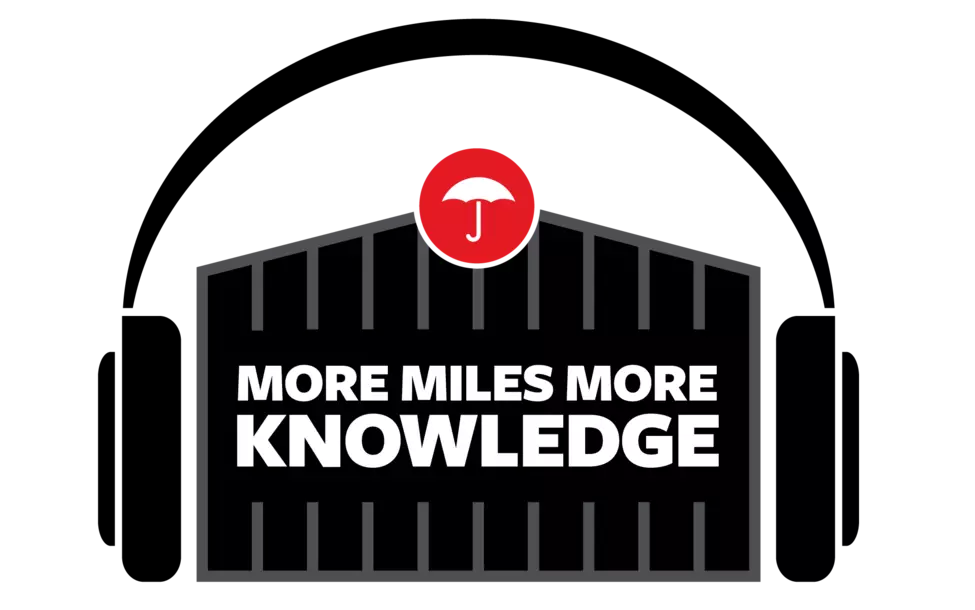
More Miles, More Knowledge
The transportation industry is continually evolving. From cargo theft trends to security best practices, have a listen and gather key takeaways on today’s most challenging issues.
Transportation Business Resources
4 Best Practices for Navigating FSMA Compliance
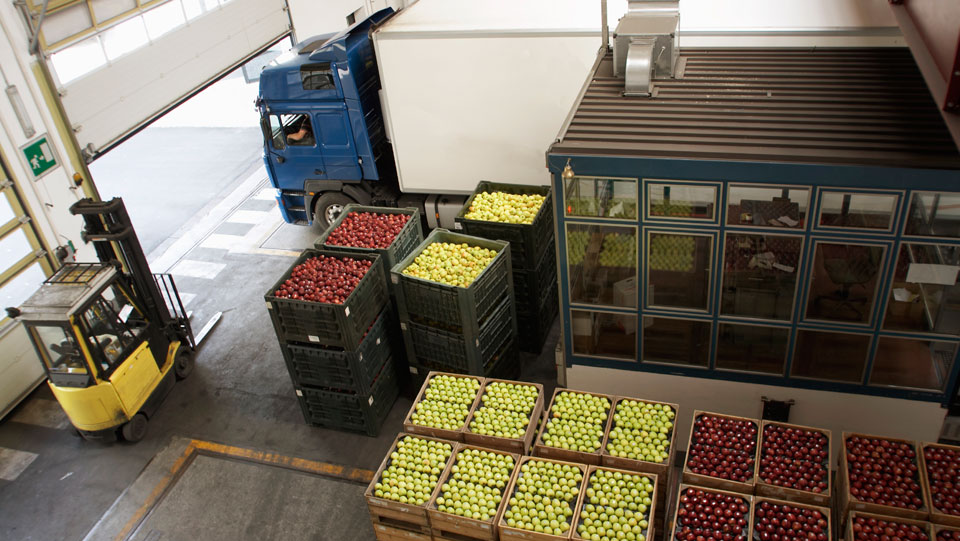
Transportation Business Resources
Cargo Theft: The What, How, Where and When
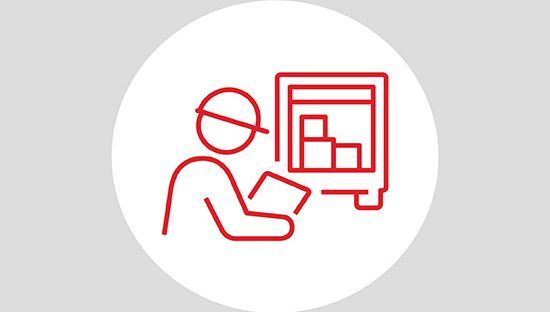
Transportation Business Resources
Cargo Theft and Broken Seals Can Be Costly to Transportation Businesses
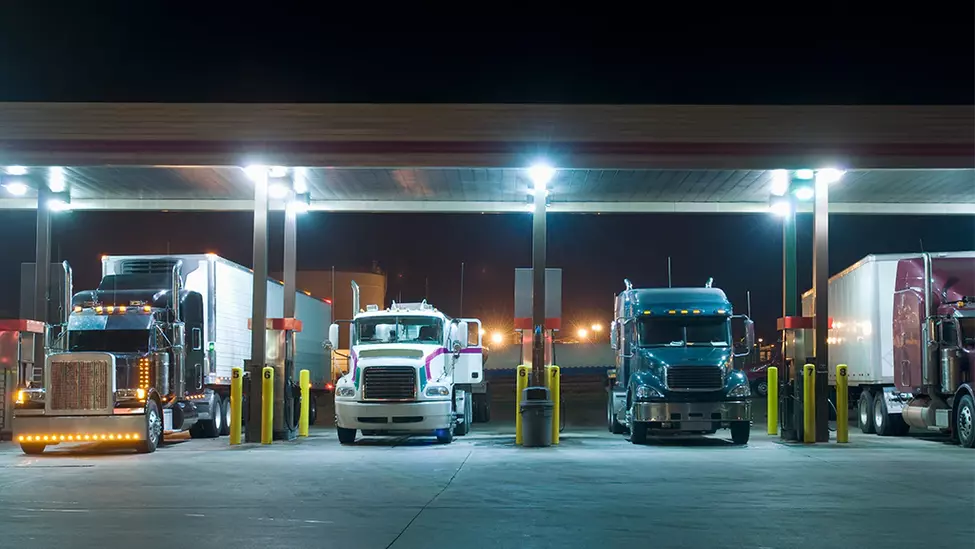
Transportation Business Resources
Transportation IoT: Opportunities and Risks
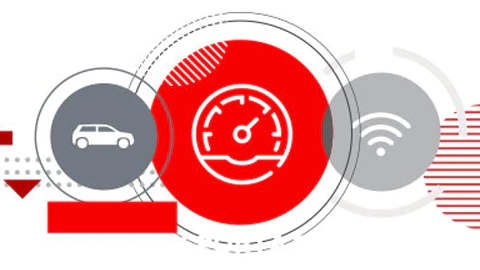
Transportation Business Resources
4 Ways Domestic Freight Brokers Can Avoid Unexpected Liability Claims
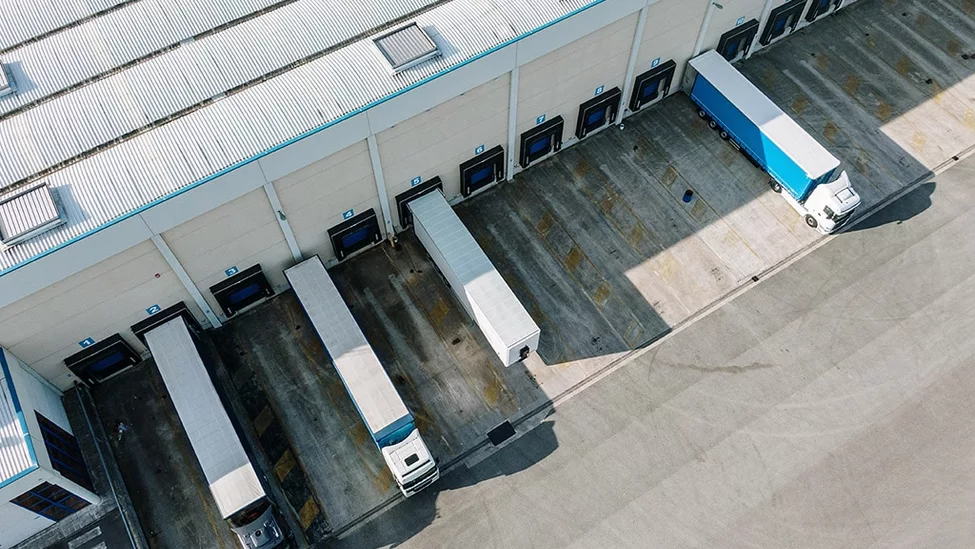
Transportation Business Resources
Managing Your Risks When Hiring Subhaulers
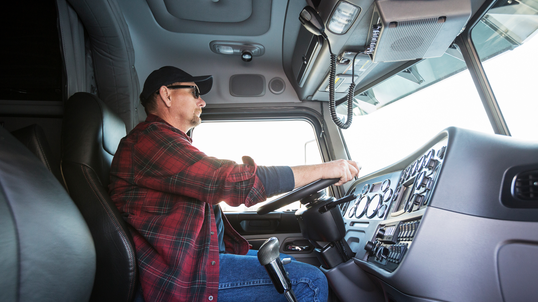
Transportation Business Resources
Cargo and Identity Theft: Early Reporting Can Help Minimize Loss
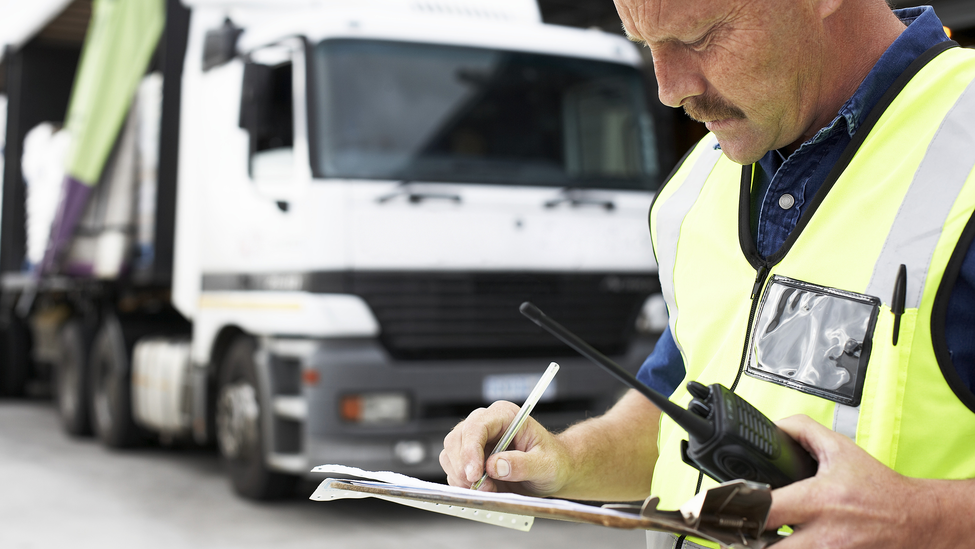
More Transportation Resources
Supply Chain Risk Management Resources
Life of a Piece of Cargo
There’s a lot that can happen to cargo on its journey. Protecting yourself from these cargo-related risks is key to protecting your supply chain.
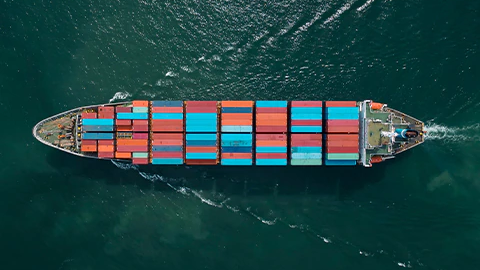
Supply Chain Risk Management Resources
Supply Chain Management Tips
Your business may be held liable for every step in your supply chain. Get tips on effective supply chain management with this infographic from Travelers.
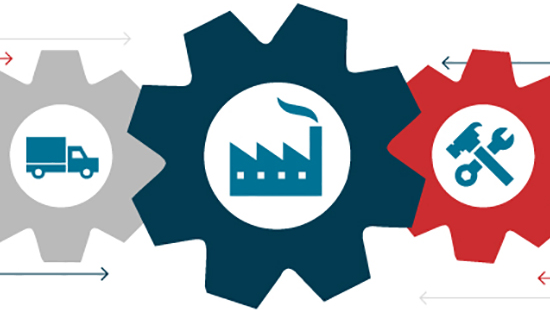
Supply Chain Risk Management Resources
The Evolution of the Freight Broker Model Brings New Risks
A new business model in the freight broker industry brings new risks as well as opportunities.
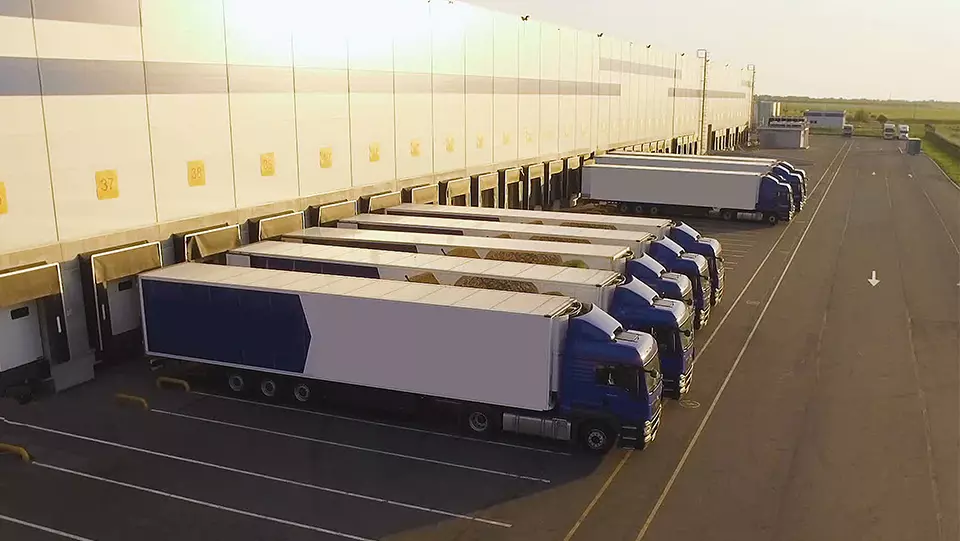
Driver & Fleet Safety
Vehicle Telematics Program Guidelines
Having a discussion with drivers can help vehicle telematics become accepted in your business.

Supply Chain Risk Management Resources
4 Ways Freight Brokers Can Help Prevent Cargo Theft
Here are some ways that freight brokers can help prevent cargo theft, including contractual risk transfer, properly vetting carriers and recognizing potential cargo theft schemes.
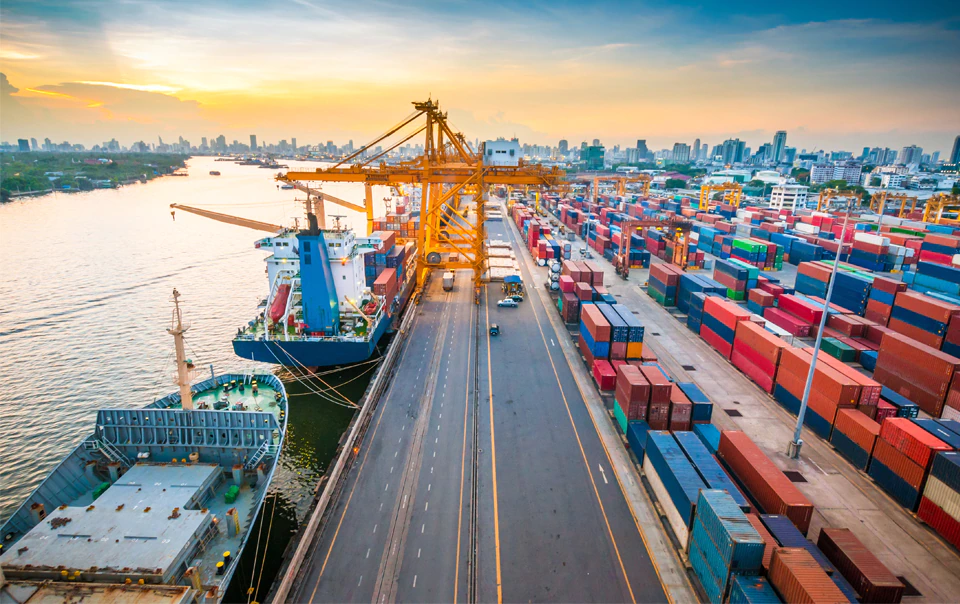
Supply Chain Risk Management Resources
5 Cargo Theft Tactics and How to Help Prevent Them
Cargo theft comes in many forms, from fictitious pickups to misdirected loads. Learn cargo theft types and tips for cargo theft prevention.

Driver & Fleet Safety
8 Elements of a Fleet Safety Program
A formal fleet safety program can help maximize fleet efficiency, enhance safety and more.

Supply Chain Risk Management Resources
Protecting Your Cargo in Transit
Taking steps to protect cargo can help prevent business interruptions. Learn about inspecting, securing and receiving cargo.
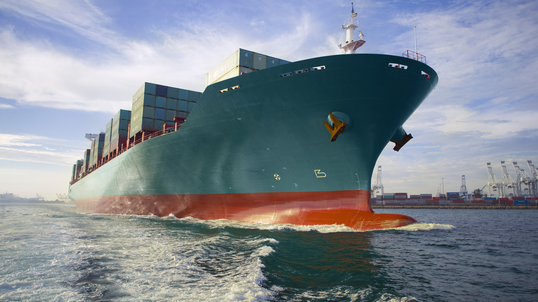
Related products & services
Transportation insurance
From vehicles to cargo, Travelers can help you find the right transportation coverage for today’s unique risks. A leader in insuring commercial vehicles, we provide a broad range of affordable commercial insurance coverages to help auto and trucking customers protect their business.
Special Investigations Group
Our Special Investigations Group is dedicated to theft protection and recovery, guiding clients through the adoption of procedures that harden their operations against criminal activity and assisting law enforcement on the recovery of stolen goods.
